Build it and they will come. This quote, taken from the movie Field of Dreams, is mistakenly applied by business owners to their daily operations. What if we told you that ‘building it’ isn’t as comprehensive a strategy as you may have previously thought? A lot of times, you must take the initiative and present what you’ve built up. A proven and effective way is through business proposals.
[bb_toc content=”][/bb_toc]
Proposal Template Example
What Does a Business Proposal Consist Of?
Work on any kind of business proposal starts with learning what to include in the document. Although the many details will differ between companies, contexts, and types, there are elements that no one can afford to neglect. Described in detail below are those elements, all of which are already found on any template of a proposal:

1. Executive Summary
An executive summary is a section where the proposal itself is summed up for the readers’ benefit. While it can be restricted to a single part of your proposal, there are others who may decide to turn this into a fully-fledged document—concise as it may be—and separate from the original document itself.

2. Company Description
Also referred to as a ‘bio,’ a company description is the section where the readers are provided with a complete overview of the business itself. Its purpose is to educate prospective clients on what your company offers, what its goals are, and why it does what it does.

3. Market Analysis
The market analysis is an important element because it provides a comprehensive study regarding the overall dynamics of your market. It will delve into aspects such as the market’s size, its value, and the status of its economic market, among other things.

4. Competitive Analysis
The competitive analysis is where the competition is listed down and thoroughly assessed. Such an analysis tends to look into both the offensive and defensive aspects so as to attain greater strategic context on your competitors. This analysis applies not just to direct competition, but also indirect ones.

5. Marketing and Sales Plans
Among the most important elements to include in any business proposal would be both the marketing and the sales plans. For the former, it outlines the planned marketing strategy over a specified time period. The latter, on the other hand, is responsible for outlining the integrated sales tactics and overall strategies.

6. Financial Projection
One of the last crucial elements of a business proposal is the financial projection. This involves extensive forecasts of both the company’s revenues and its eventual or present expenses.
How To Write Business Proposal Using The Editor Tool
Our exclusive template editor tool provides all available ways to help you generate a full-length and efficient business proposal. Forget about the long hours of formatting and figuring out how to compose your content. You’ll have a ready-made document filled with suggestive and well-researched information to serve as your guide. Refer to the steps below to help your know-how:
1. Customize Cover Page
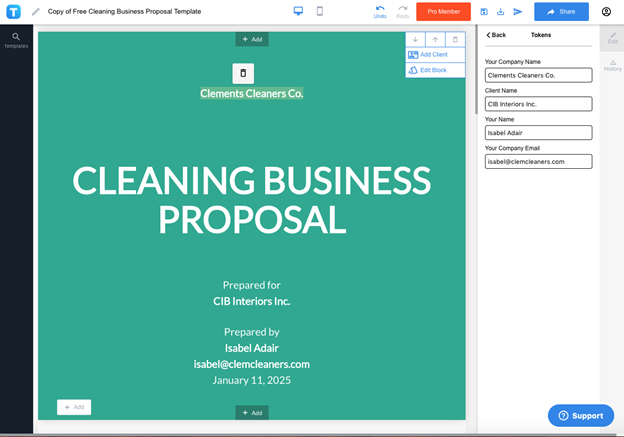
Begin by customizing the template’s cover page by simply replacing the given details on the right column. Double click on the title and a “Tokens” section will appear. The labels before the blank will help you determine what details to include. While you can edit this information by directly changing the texts on the page, using the token column will change all these details on the entire business proposal instead of going over them one by one in the next pages.
2. Edit Text Design

If you’re wondering where to locate the text editing panel on the tool page, simply highlight any text you want to change so you can alter the font type, font size, alignment, bulleting, indentions, and other available options.
3. Edit the Sections

Once you have edited the details of the cover page, proceed to the next pages. Check out which proposal parts are available by clicking the “Edit” on the page’s upper right-most corner. A Header column will appear. This will help you easily navigate through the different blocks of the business proposal, section by section, and customize the suggestive details according to what fits your needs. You can also opt to edit the header titles, and the changes will automatically reflect on the right column.
4. Using the “Add” Button
At most, you’ll find three “Add” buttons on every block of the template. Blocks refer to the different pages of the proposal.

When you want to add a block before or after every page, use the “Add” button on the top and bottom and click the “Add Paragraph” on the pop-up options. You can also use this to add background images, add pricing options, and include an accept button.
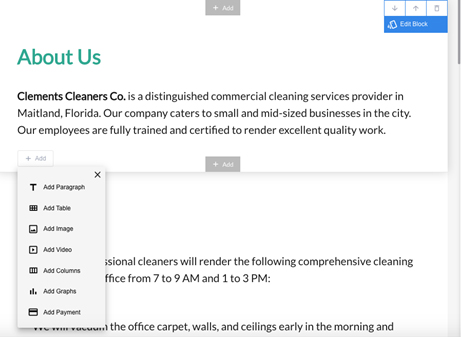
On the other hand, the “Add” button after every paragraph divides every page’s different fields and sections. You can use this to insert tables, images, videos, and graphs, should you need them to complete your proposal.
Tip: Opt to add another block when there’s only limited space left in a page instead of forcing another section to fit to achieve better results.
5. Create Your Own Style

Click anywhere on the template page to use the “Styles” column. This section in the editor tool will help you customize the layout design of your proposal. It will provide options to change the colors, customize the font colors, manipulate the font size, and change the proposal format according to your personal preference or accommodate your branding style.
6. Proofread Your Work
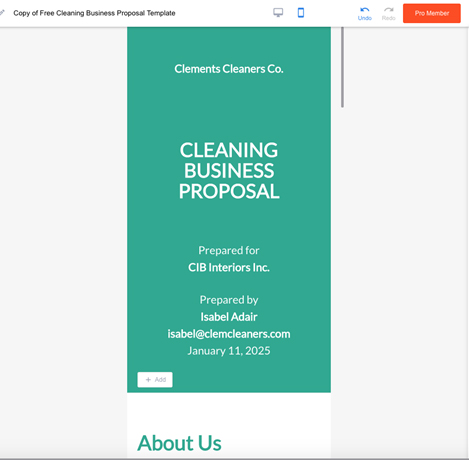
Once you’ve made the necessary revisions to the template using the tool, make sure you have everything in the right places. Take the time to scroll through the template for minute corrections and typos that you might have missed. If you’re sending your proposal through email, you’d want to make it mobile-friendly for viewing and access. To ensure that your proposal looks well-formatted on various devices, you can switch to mobile view by clicking the mobile icon directly above the template.
7. Save, Download, Send, or Share!

How easier can proposal-making get? Our editor tool not only offers a comprehensive proposal template with expert content that’s easily editable, but you can also directly send your completed business proposal to your recipients or save it for later use. Be sure to be one of our premium members by subscribing to our plans to enjoy this convenience for various business documents.
What Are the Types of Proposals?
To better familiarize yourself with the ins and outs of business proposals, know that there are three distinct types or categories. First, there’s the formally solicited, then the informally solicited, and lastly, there’s the unsolicited. Learning the specific details of each type can also help you decide on which template for a proposal to download, should that route prove the most enticing to you.
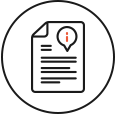
1. Formally Solicited
The first type we will discuss will be the formally solicited business proposals. These documents are the ones prepared when a person or company has an official proposal request to respond to. When dealing with formally solicited proposals, it is already expected that you are aware of the many requirements involved and that you have enough information regarding the potential buyer. All that needs to be done in this scenario is to write up the proposal for the potential buyer’s benefit.
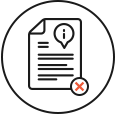
2. Informally Solicited
For this type, it must be noted that this is by no means an official request. On the contrary, it is the unofficial expression of the prospective buyer that sets the creation of these documents off. They may still ask you to create the proposal so that they can personally take a look and make evaluations. However, that does not change the informal nature of this document.
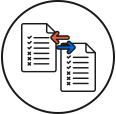
3. Unsolicited
There are those who would compare this to a cold email. Some may even draw comparisons to marketing brochures since these are often one-size-fits-all types of business proposals. Although many often turn out looking a bit generic, that’s nothing some personalization and market research can’t solve. Even with those changes though, one gaping disadvantage is that these unsolicited proposals will lack specific requirements and understanding of your prospective buyers.
Any other type of business proposal will inevitably fall under either one of these types. As a company, you may also find yourself on both ends: as the provider of these documents and as its recipient. With this knowledge, you will now find yourself better equipped to handle any sort of expectations regarding these proposals going forward.
Proposal Writing and Submission Tips
Even with the steps detailed above, there are always other writing and submission tips to keep in mind. Read through the following to ensure a much better output on the business proposal you seek to create:
Tip 1: Make Sure You Know Your Market
No matter how well-written you think your document is, none of that is going to matter much if there are holes in your strategy. To make sure this is not the case, always do thorough research on your market. Leave no stone unturned. Be sure that you are intimately familiar with what your customers want, the present trends in your industry, and how well-prepared your competition is.
Tip 2: Don’t Neglect the Visuals
If this is your first time creating a business proposal, you might make the mistake of thinking that style and presentation don’t mean as much compared to what you have to say. Nothing could be further from the truth. Remember that the point is to entice, convince, and convert. This isn’t to say that visuals and aesthetics should be the top priority, but they won’t hurt your chances either. Humans are visual creatures and anytime you have, let’s say, graphs and charts to explain your point over just words, know that you’re already on your way.
Tip 3: Be as Concise as You Can
Even when you have a lot to say and a lot to offer, remember that less is still more. At least as far as your written language is concerned. Another thing to remember is that time is money. Many prospective clients have better things to do than read walls of texts. When you keep everything as short as you can, you do them a favor. Concise writing is often also more understandable, and as a result, more effective.
Tip 4: Don’t Neglect Your CTAs
What is a CTA? It stands for the call to action. At the end of it all, you must never be hesitant to make that ask. Keep in mind that people won’t be able to say yes to anything if they aren’t asked to begin with. Including a call to action is a bold, pro-active move that many clients will respect.
Tip 5: Don’t Neglect Your Introduction
We all know the value of excellent first impressions. While we often place emphasis on that in regards to interpersonal relationships, it remains relevant in the context of business proposals as well. More specifically, many clients are gained—and lost—in the introductory paragraph. That is where you display your awareness of their needs and how you intend to solve their problems through your services. Get it done right and the rest will be a breeze.
Tip 6: Social Proof is Key
Having a product or service that your client needs or wants is not a guarantee by any stretch of the imagination. Sometimes, clients are naturally wary and will need an extra nudging before they commit. This is where social proof is at its most relevant. One of the most effective ways to include social proof is through presenting testimonials from past clients or even through stories.
Business Proposal Statistics
Taken from Proposify, the following statistics may further convince you of the worthiness of business proposals:
- Proposals are written in 2019 average 57% more content but fewer sections compared to those written in 2014.
- Proposals written in 2019 have a creation turnaround time that’s decreased by 70% compared to those written in 2014. It takes seven days to complete in 2014 and 2.3 days in 2019, from starting to sending.
- Proposals written in 2019 are opened by prospects twenty times faster (within 80 minutes of sending) compared to those written in 2014 (within twenty-six hours).
- An average of 50% of all proposals written in 2019 ended up signed within a single day compared to the average of seven days in 2014.
In addition to those facts, there are various other statistics that may further convince you of the overall effectiveness of business proposals.
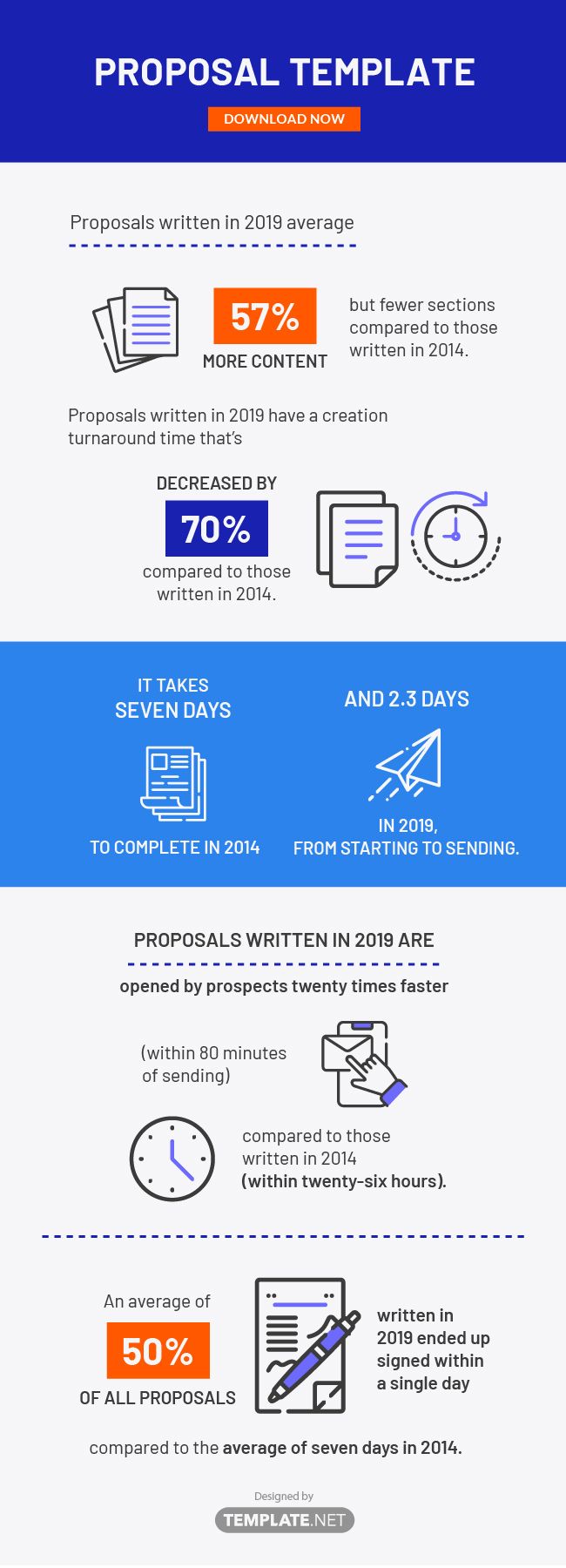
FAQs
How many pages should be in a proposal?
The average business proposal will require at least three pages. However, there are no hard-fast rules regarding the overall length of any given document or business proposal writing in general. As long as you can describe all of the relevant details, then it can be as short as one page or as long as five or more.
How to write a one-page proposal?
The best way to write a one-page business proposal is to determine which of your business proposal ideas are absolutely necessary. Once you’ve decided on what to include, write them down as concisely as possible. If you do it right, you should still be able to pull off an effective one-page proposal.
What is the difference between a proposal and an RFP?
The main difference between these two would be all about the ones preparing them. The former is often the responsibility of the sales and marketing teams, acting in the place of just one business proposal writer. Meanwhile, the latter is issued by buyers or any other kind of procurement organization. While there are certainly commonalities between these documents, it is appropriate to point out where things differ because those are what creates the necessary distinctions.
As you know, there are many industries that rely on other industries in order to thrive. Depending on your background, you may find yourself creating construction proposals, startup proposals, freelance proposals, sponsorship proposals, and the like. Make use of what you’ve learned here to great effect and don’t hesitate to utilize proposal software alternatives whenever necessary.
from Free & Premium Templates https://ift.tt/2NUnREm
via IFTTT



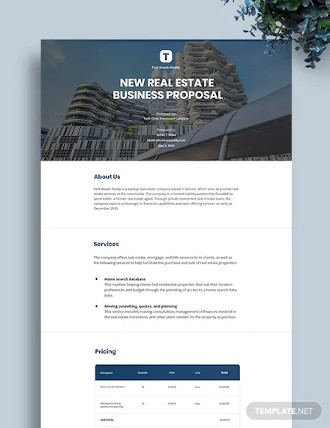
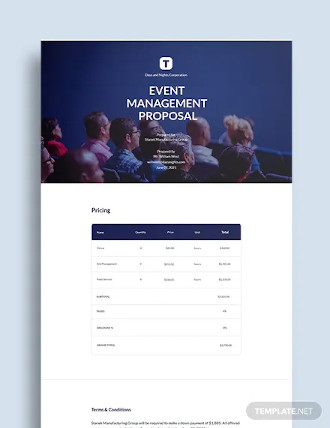
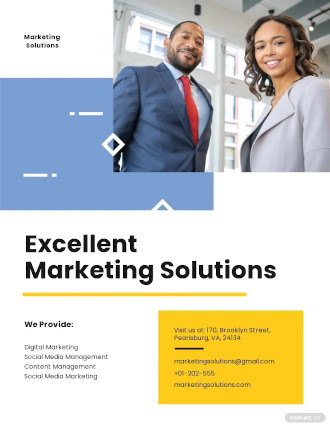
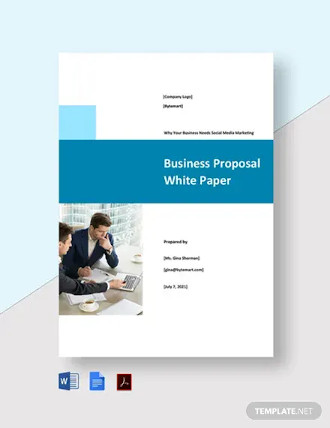
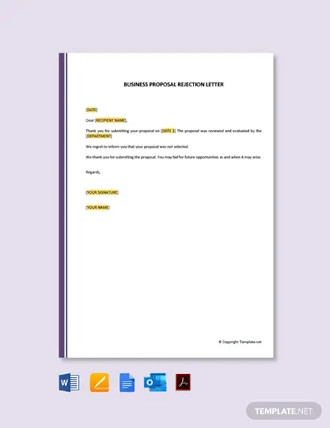

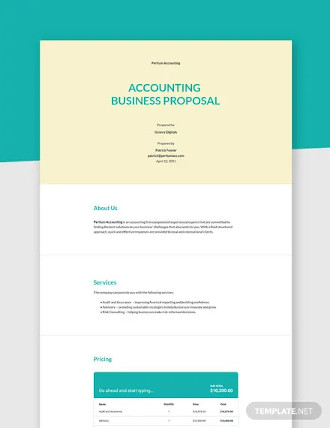
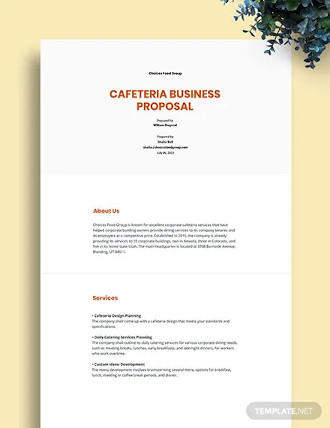
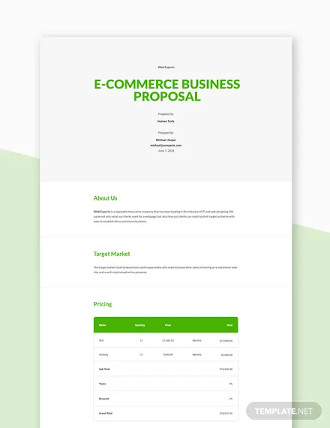
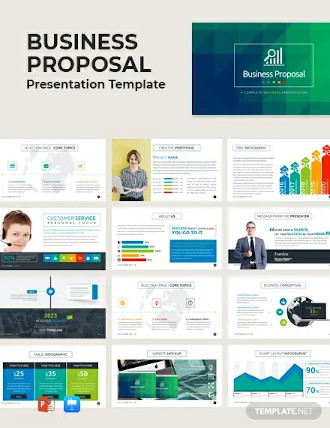



Emoticon